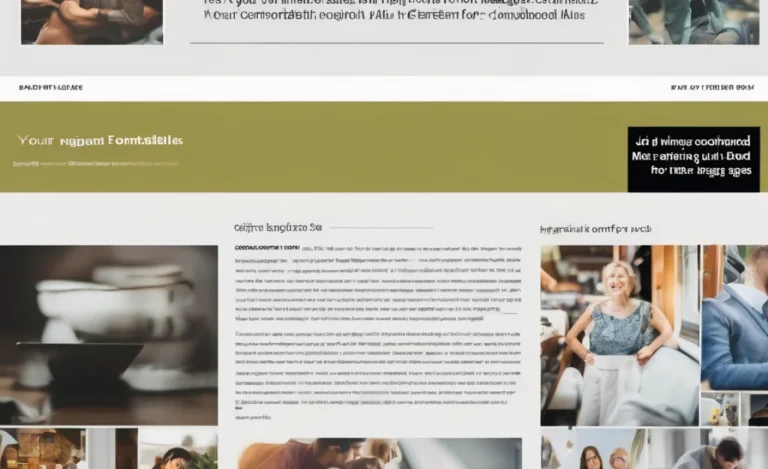In the world of LaTeX, properly formatting captions is essential for a clean and professional content presentation. Whether you’re working on multilingual typesetting, handling bibliography management, or managing document structure, LaTeX offers powerful tools to ensure every detail is perfect.
One critical element that often requires fine-tuning is the font size for captions. In this guide, we will explore the best font size for LaTeX captions in 2025, considering various factors such as readability, style, and customization.
Key Takeaways
- The best font size for LaTeX captions in 2025 largely depends on the document type and specific content requirements.
- Smaller font sizes such as
smallorfootnotesizeare typically appropriate for captions in technical documents. - The
captionpackage is essential for managing caption font sizes in LaTeX documents. - For multilingual typesetting, adjusting caption sizes is crucial for maintaining document clarity.
Understanding LaTeX Caption Font Size
Captions are essential in explaining content when dealing with tables, figures, or mathematical expressions in LaTeX. LaTeX provides flexibility in adjusting font sizes, including table captions, figure captions, and code listings. The ideal font size for these captions should strike a balance between visibility and fitting seamlessly into the overall document design.
LaTeX offers multiple font size options, including tiny, scriptsize, footnotesize, small, normalsize, large, and beyond. The size you choose will depend on the document’s class, whether it’s a manuscript, article, or a multi-file LaTeX project, as well as the overall style of your document.
How To Adjust Font Size For Captions In LaTeX
To adjust the font size of a caption, you can use the caption package, which allows you to fine-tune caption settings, including font size, style, and formatting. Here’s an example of how to change the font size for captions:
This will set the caption font to a smaller size, which may be ideal for dense mathematical documents, where minimizing blank spaces around equations and text is crucial. For more precise control, you can even specify different font sizes for figures and tables:
Factors to Consider for Choosing Caption Font Size
- Document Type
The font size of your captions should align with the overall document style. For example, in an article class, where you have more room for text and images, the default caption font size might suffice. However, you might opt for a smaller font size for double-sided documents or manuscripts to optimize space. - Math Mode and Captions
You may need to adjust your captions for clarity and consistency in documents featuring mathematical expressions, such as align equations or Feynman diagrams. For math symbols and mathematical fonts, you can apply thecaptionpackage to maintain readability without overwhelming the reader. - Readability
A common issue with LaTeX documents is ensuring that captions, particularly for tables or figures, are still legible while not dominating the page. Thefootnotesizeandsmalloptions are generally safe for most document types, offering good readability without excessive prominence. - Space Efficiency
When preparing LaTeX documents with multiple sections or complex mathematical formulas, minimizing blank spaces between text blocks and captions is important. By selecting a small font size, you can reduce wasted space while maintaining legibility. - Code Listings
If your document includes code highlighting and code listings, the caption size for these sections should complement the rest of your content. For example, if the LaTeX document includes inline code or references,smallorfootnotesizemight be appropriate.
Caption and Text Formatting Tips
In addition to font size, you may want to consider other formatting options for captions, especially when dealing with LaTeX references and bibliography management. You can use LaTeX commands to align text and adjust the display style for captions.
For instance, consider using the \caption* command for unnumbered captions in figures or tables. If you need to align equations or add captions to display style formulas, you can use environments like align or equation to ensure consistency across your document.
If your document involves referencing sections, equations, or figures, the natbib, bibtex, and biblatex bibliography styles can be utilized for citation management. Whether you’re using the natbib package for Harvard-style referencing or switching to the biblatex package for enhanced customization, it’s crucial that your caption style fits seamlessly with your bibliography management.
Best Font Size for Multilingual Typesetting
LaTeX is an excellent tool for multilingual typesetting, allowing you to create documents in multiple languages. When working with documents in languages that require special characters, such as Greek letters or non-Latin scripts, adjusting your caption font size is key to maintaining clarity and avoiding clutter.
For example, captions in LaTeX documents written in languages like Hindi, Chinese, or Arabic should avoid overly large fonts, as these languages typically require more space. Setting your captions to small or footnotesize will ensure they don’t overpower the rest of the document.
Practical Example: Creating a LaTeX Document with Captions
Here’s an example of how you might set up a document with tables, figures, and mathematical content, each with appropriately sized captions:
What Is The Default Font Size For Latex Captions?
The default font size for LaTeX captions is usually set to normalsize, which works for most documents.
How Can I Adjust The Font Size For Captions In Latex?
You can use the caption package with commands like \captionsetup[figure]{font=small} to customize caption sizes.
What Is The Recommended Caption Font Size For Technical Documents?
For technical documents with equations and figures, a smaller font size like footnotesize or small is typically recommended.
How Can I Add Captions To Mathematical Equations In Latex?
Use the equation environment for numbered equations, and add captions with \caption{} to describe the equation.
Can I Use The Caption Package To Change The Font Size For Tables And Figures Separately?
Yes, you can set different font sizes for tables and figures using the \captionsetup[table]{font=} and \captionsetup[figure]{font=} commands.
Does Latex Support Multilingual Typesetting For Captions?
Yes, LaTeX can handle multilingual typesetting, and you can adjust caption sizes to fit the requirements of different languages.
How Do I Reference Tables Or Figures In Latex?
Use the \ref{} command to reference tables, figures, or sections in your LaTeX document.
Can I Use Latex For Complex Mathematical Documents With Captions?
Yes, LaTeX is widely used for mathematical documents, and you can customize the caption size for equations, tables, and figures.
How Can I Include Images With Captions In Latex?
Use the \includegraphics{} command to insert images and the \caption{} command to add captions.












